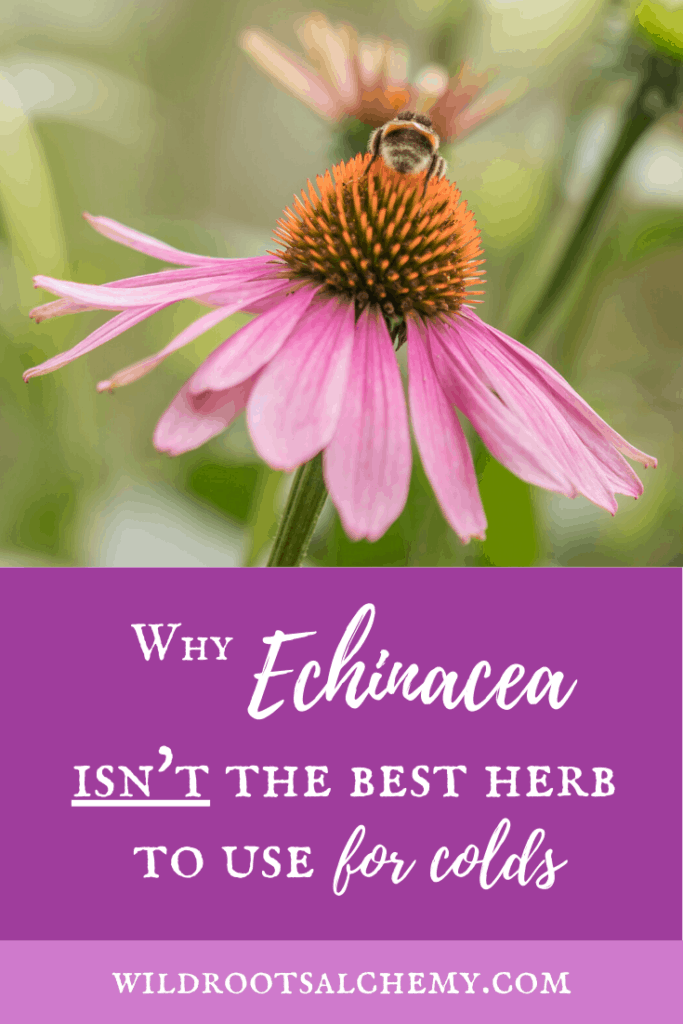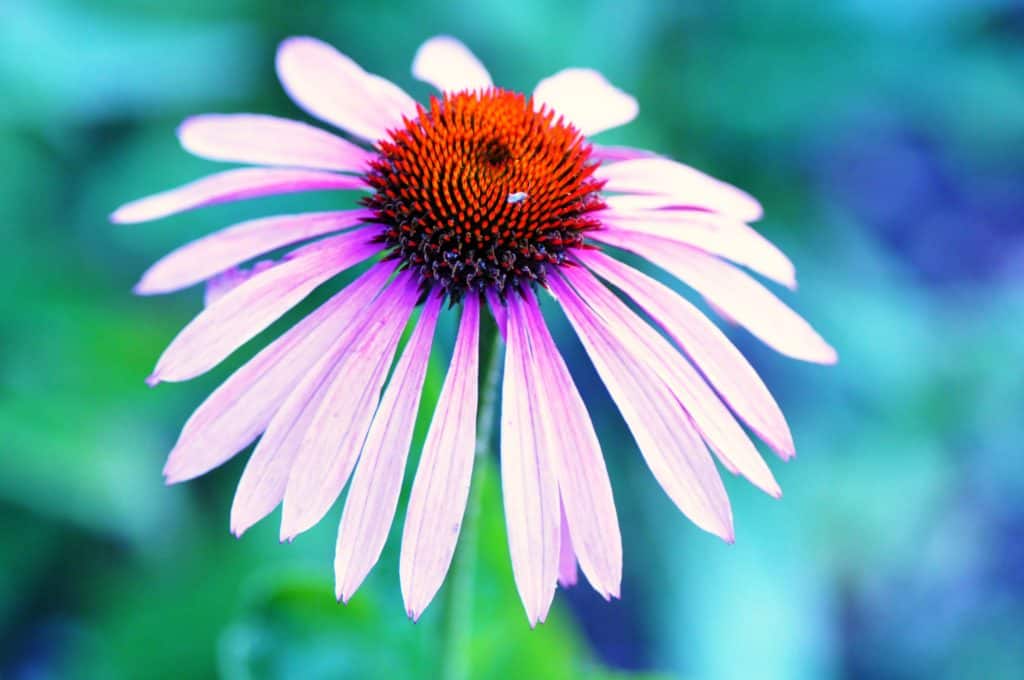
Echinacea is often the first herb people think of when they come down with symptoms of a cold. For good reason, too: many Western herbalists and natural health practitioners have touted its benefits for the prevention and treatment of the common cold for decades. However, when we think of a holistic approach to treating colds, Echinacea—while indeed a natural medicine—is often not used holistically. And it’s definitely not the best remedy for the common cold.
“Green” Allopathy vs. Vitalism (Holistic Medicine)
When I refer to “green” allopathy in terms of herbalism, what I am referring to is the substitution of natural substances (like herbs) in place of pharmaceutical drugs with the overall approach to treatment remaining the same—to suppress the body’s attempts to self-regulate and restore balance by “getting rid of” the symptoms rather than addressing the root cause. (However, “getting rid of” these symptoms often drives the pathology deeper into the body, with chronic suppression of acute symptoms eventually evolving into chronic disease.)
So instead of using an over-the-counter medication like Sudafed to get rid of your stuffy nose (which isn’t treating the underlying problem), you try Echinacea to help ward off your symptoms without realizing that it may not actually be supporting your body’s attempts to restore health.
Momentary segue! Many randomized controlled trials on herbal medicine products attempt to study herbs the way that they would study pharmaceutical medications. In the case of herbs, a linear lens is applied when a holistic perspective is needed, and thus research studies often aren’t getting the results that traditional herbalists and other holistic practitioners witness on a regular basis. That is by no fault of the plants but of the reductionist design of most scientific inquiries.
This is likely why many studies have not shown a substantial benefit to using Echinacea for colds, primarily because they aren’t utilizing a holistic approach, which involves matching the energetic qualities of the plant to those of the diseased individual in order to support the body’s innate healing capabilities rather than suppressing symptoms. To make it a bit more complex, those qualities will vary among individual people, even if the disease is the same!
The Energetic Patterns of a Cold
By energetics, I’m generally referring to whether the body (or organ or tissue) is ‘hot’ or ‘cold’ or ‘damp’ or ‘dry.’ The common cold is a viral illness that typically invites a cold pattern (as the name would allude to!) with overall deficiency.
When do we get colds? When we are deficient: we’re stressed, tired, with cortisol wreaking havoc on our immune system, our reserves depleted and our nervous system taxed.
This is the opposite of the hot pattern or tissue state, which is often found in states of active inflammation: bacterial infections and fevers (like those associated with influenza).
The Energetics of Echinacea
Echinacea is a bitter, cooling, and drying herb. It has a diffusive quality and stimulates the system when there is heat in order to regulate the immune system, with the cooling nature of the plant offering balance to an excess of heat in the body. This means that the medicine of the Echinacea plant is most ideal for hot conditions: bacterial infections (like abscesses, Strep pharyngitis, bacterial pneumonia), fevers, and septicemia. In fact, these were the traditional and physiomedicalist uses of the plant prior to its marketing as a cold remedy!
Nonetheless, there are instances when Echinacea could potentially be useful in the setting of the common cold, but I’ll save all that for a future post! For now, let’s talk about which plants are nearly universally beneficial for colds.

An observational pearl to remember: The flower tops of the Echinacea plant are used as medicine. If you apply the Doctrine of Signatures to the plant, you can see that the cone-shaped flower head resembles an eruption (like an abscess) and the petals are similar to the red streaking seen in lymphangitis as a result of an infection.
Plant Medicine for the Common Cold
People gets colds because they are depleted, and therefore colds are acute illnesses designed to bring awareness to the fact that they need to rest and bring warmth back into their deficient body. The BEST medicine for the common cold is to listen to the wisdom of the body: to rest, to drink plenty of water (and teas, soups, and broths), to keep warm, and to eat simple and nourishing foods.
With the being said, plant medicine can be wonderfully supportive as well. Herbs for the common cold are generally warming and pungent, such as ginger, cinnamon, fennel, yarrow, and horseradish (great for stuffy noses!).
Herbal teas are a fantastic way to enlist the help of plant medicine while staying warm and hydrated—they are, in fact, the optimal route of administering medicinals for colds! Consider making a delicious ginger-lemon-honey tea at the onset of any cold symptoms and drink abundantly until symptoms resolve. Nutrient-dense herbal broths and soups are also great ways to get in your medicine and nourish your body.
What plant medicine do you work with when you get a cold? I’d love to hear about your cold remedies below!
Note: While Echinacea has traditionally been used for the conditions described above, bacterial infections, red streaking, and fevers can be life-threatening and people with these conditions should be seen by a medical practitioner immediately for evaluation and proper treatment.





